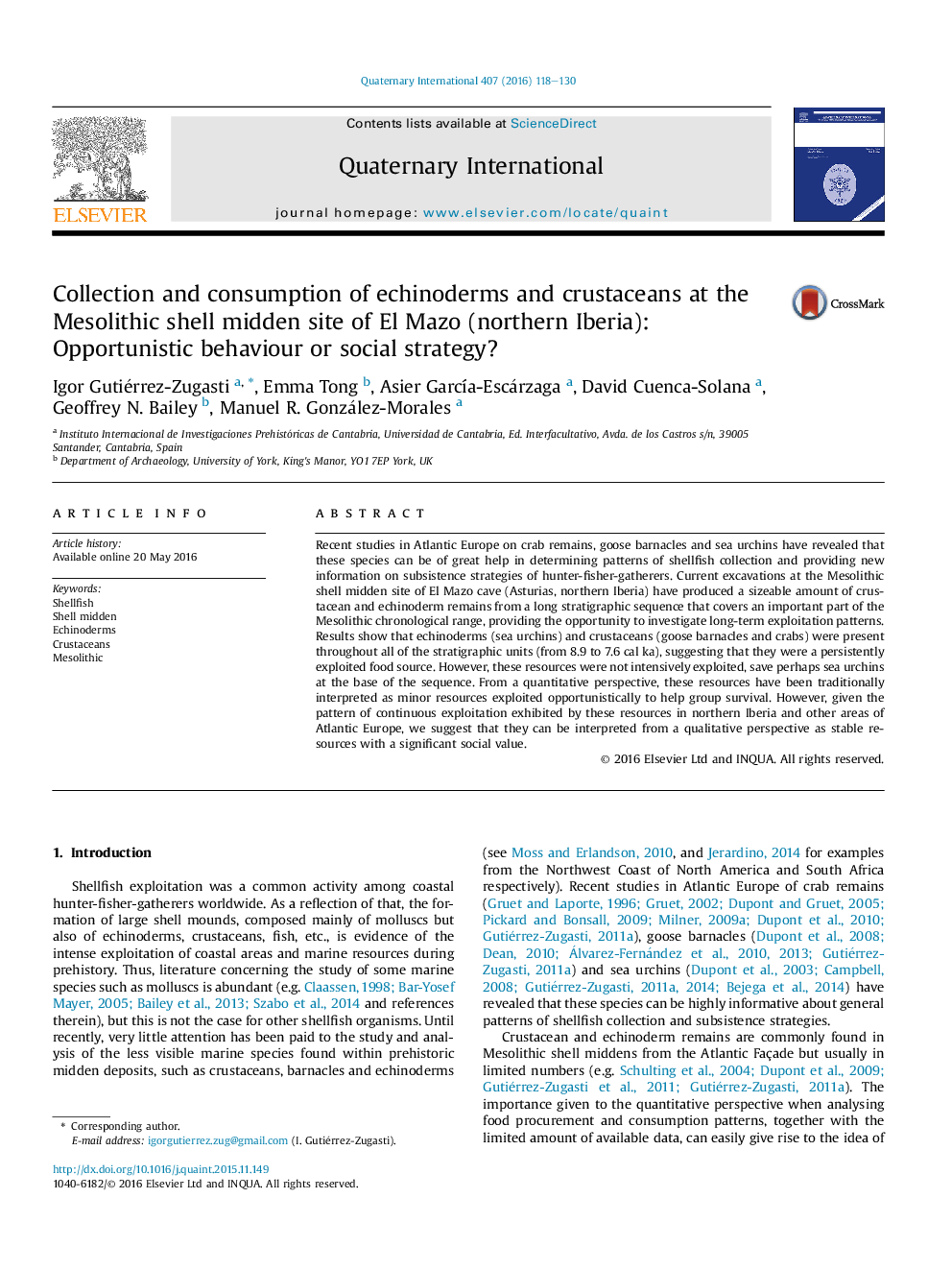| Article ID | Journal | Published Year | Pages | File Type |
|---|---|---|---|---|
| 1040006 | Quaternary International | 2016 | 13 Pages |
Recent studies in Atlantic Europe on crab remains, goose barnacles and sea urchins have revealed that these species can be of great help in determining patterns of shellfish collection and providing new information on subsistence strategies of hunter-fisher-gatherers. Current excavations at the Mesolithic shell midden site of El Mazo cave (Asturias, northern Iberia) have produced a sizeable amount of crustacean and echinoderm remains from a long stratigraphic sequence that covers an important part of the Mesolithic chronological range, providing the opportunity to investigate long-term exploitation patterns. Results show that echinoderms (sea urchins) and crustaceans (goose barnacles and crabs) were present throughout all of the stratigraphic units (from 8.9 to 7.6 cal ka), suggesting that they were a persistently exploited food source. However, these resources were not intensively exploited, save perhaps sea urchins at the base of the sequence. From a quantitative perspective, these resources have been traditionally interpreted as minor resources exploited opportunistically to help group survival. However, given the pattern of continuous exploitation exhibited by these resources in northern Iberia and other areas of Atlantic Europe, we suggest that they can be interpreted from a qualitative perspective as stable resources with a significant social value.
